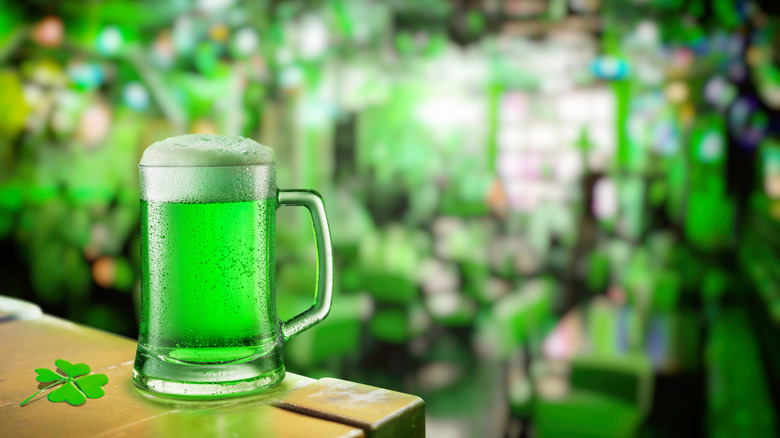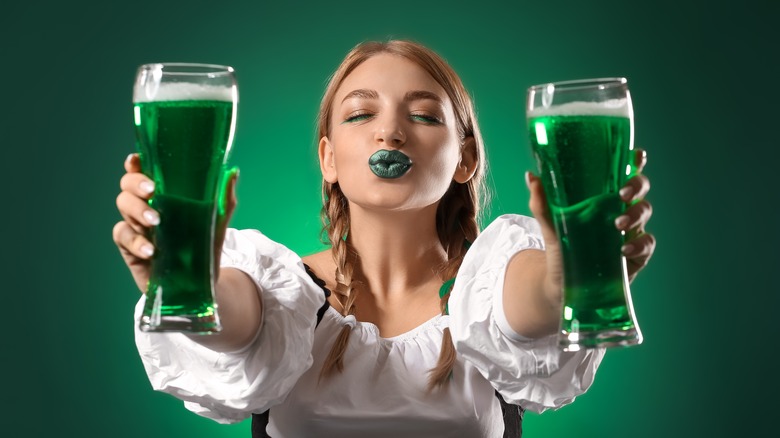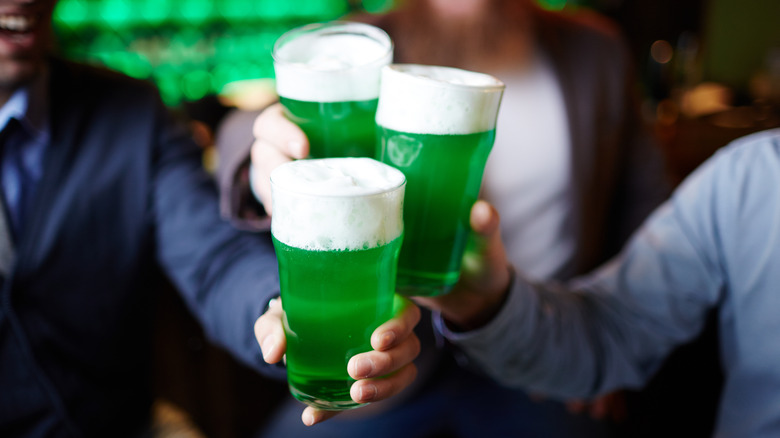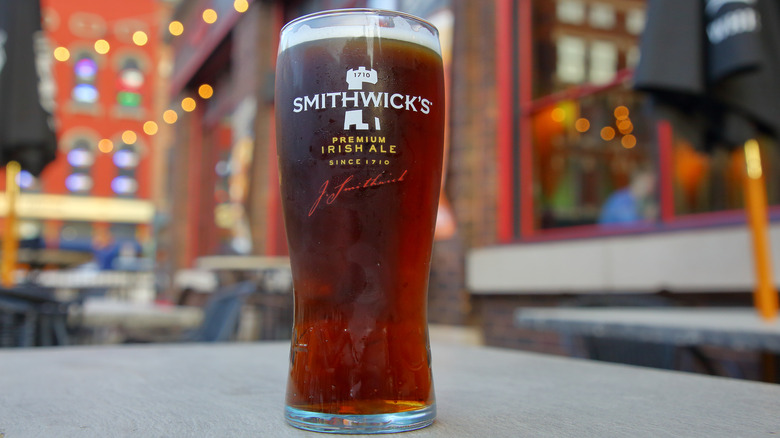Green Beer Isn't Irish, It's Awful
Drinking green beer is a popular way to celebrate St. Patrick's Day in the U.S., with revelers imbibing over four billion pints of the colorful brew on the holiday each year. Like many of the traditions now commonly associated with the March 17 celebration of all things Irish, green beer was actually invented in the United States, not Ireland. (The tradition of a St. Patrick's Day parade, for example, also originated in the U.S., with Irish immigrants in Boston and New York holding the first official parades for the holiday back in the 18th century.) The ancestral home of St. Patrick's Day, many cities in Ireland — like Dublin — have since adopted parades into their annual festivities, but the Irish never cottoned to other American-born inventions like dying rivers and beer green.
Though green beer didn't really catch on in the U.S. until the 1950s, the origin of emerald-hued brews dates back further to 1914, when a New York doctor named Thomas Hayes Curtin created the first batch for a St. Patrick's Day celebration thrown in the Bronx. The good doctor's potion, which he served to fellow club members at the Schnerer Club of Morrisania, received its green color from an unusual source: a laundry bleaching powder known as wash blue. In the years since, of course, food dyes and other colorants have been used instead of whitening bleach. But despite the recipe update (we now know wash blue is poisonous), green beer remains a tradition the Irish have smartly chosen to opt out of — and one that would be better left in the past.
A day for feasting, not falling down drunk
Green beer and all it's come to represent is a perversion of the true spirit of the holiday. When St. Patrick's Day first began being celebrated in Ireland during the 10th century the festivities were religious in nature. (St. Patrick is Ireland's patron saint, after all, and the man who brought Christianity to the nation.) The day was celebrated with feasts held in St. Patrick's honor, where everyone was given a brief reprieve from their lenten obligations, eating and drinking to their hearts' content and toasting the saint. U.S.-style celebrations featuring binge drinking and bar hopping were relatively uncommon until more recently; In fact, pubs in Ireland generally remained closed on the holiday through the mid-1970s, in part to help those who had given up drinking alcohol for Lent avoid temptation, but also because being overly intoxicated on a religious day was considered disrespectful.
The evolution of St. Patrick's Day traditions in the U.S. came from a much different place. Irish immigration, which peaked following Ireland's Great Famine, resulted in large Irish-American populations in many U.S. cities. The holiday became a popular way for these communities to celebrate their culture and heritage at a time when they faced prejudice, not necessarily honor a saint.
Of course, there is nothing wrong with adapting to the changing times, but it would be wise to preserve some of the holiday's intended spirit, celebrating Irish culture, not stereotypes. Toast your friends and family, all of Ireland, even St. Patrick himself for giving you a reason to gather, but don't use the holiday as an excuse to chug green beer until you pass out.
Green beer is cheap because it isn't any good
It's true that St. Patrick's Day has largely become an excuse to drink in the U.S., with an Integrate.io report sharing alcohol sales can be expected to increase by about 150% on the holiday. And while we would never suggest you skip your favorite Irish pub entirely, there are better options than green beer to celebrate.
Though green beer may be safer than it was in Dr. Curtin's day, that doesn't mean it's good. The beer that's dyed green and served on St. Patrick's Day is typically quite low in quality, usually made with the cheapest stuff the bar has in stock. And who can blame them? Green beer is ultimately a gimmick, so why would you bother shelling out the cash for a nice pilsner to dye if you can use a cheaper domestic light beer and sell it for the same price? But if you're going to drink on the holiday, a better option would be choosing a higher-quality beer ... perhaps one with roots in Ireland?
Celebrate Ireland by supporting Irish companies
Any self-respecting Irish pub in the U.S. will certainly serve pints of Guinness, for example, which was first brewed in Dublin back in 1759. And while Harp hasn't been around nearly that long, this lager is also an excellent Irish alternative to cheap green beer if you're looking for something a little lighter. Other beers well worth seeking out are Murphy's (another notable Irish stout); Smithwick's Red Ale; or Irish ale from Kilkenny-based brewer Sullivan's.
Of course, there's no law that says you have to drink beer on St. Patrick's Day. Ireland is also known for whiskey, and there are many notable brands to sip on if your local bar is well-stocked. If you are somewhere with a less impressive lineup, Jameson Irish Whiskey has a history in Dublin dating back to 1780 and is offered at most bars in the U.S. And if you prefer cocktails, a whiskey-based one is, all things considered, a better way to show your St Patrick's Day spirit than drinking generic beer colored with green food dye.



